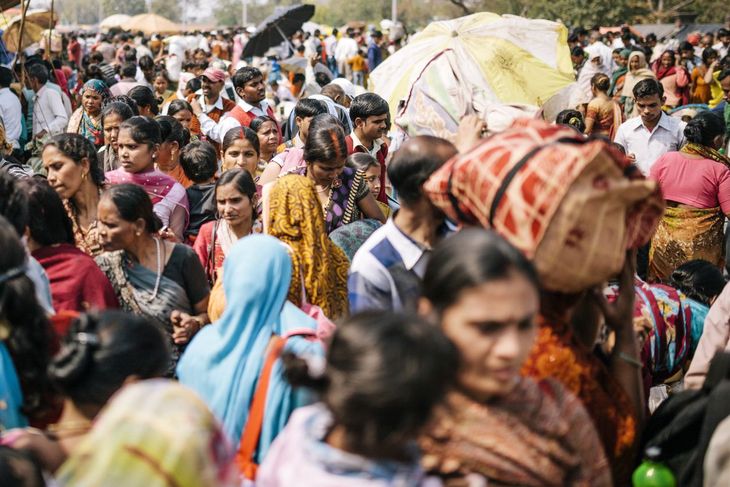If aliens arrived on our planet and wanted to meet the most “ordinary” human being of all, starting today they should go to the India, the country that became the most populous, surpassing the China.
The estimate was made by the UNwhich gave him the precise date of the April 14th so that the India surpass the China in population terms.
It is estimated that, since the last census 12 years ago, the multi-ethnic country has increased its population by 210 million inhabitantsalmost the same figure as the total population of the Brazil.
Meanwhile, with a growing population of more than 1.4 billion, India’s family planning services are under pressure to maintain a declining fertility rate.
According to a forecast of the UNon April 14 the Indian population reached 1,425,775,850 inhabitantsa figure that dethrones China from its longstanding position as the world’s most populous country.
Other estimates also pointed out that the overrun is going to happen or could already have happened at some point in the first half of this year, but that of the UN It is the only one that put a specific date.
hindu population.jpg
A huge but imprecise population
The exact population of India today is unknown (the census update from a decade ago to 2021 was delayed indefinitely by the pandemic), but everything points to exponential growth.
On the contrary, the rate of increase of the population of Chinapreviously very pronounced, is beginning to stabilize, in line with the strong economic growth of the last decades.
The population of India –and China– is already equivalent to that of the entire African continent, and far exceeds that of Europe and America.
hindu population 2.jpeg

Declining fertility rate
But in the same decades in which population growth has skyrocketed in the India, fertility rates have been declining. In 1964Indian women had an average of six children, while today they are close to two, partly thanks to the state family planning service, which India claims to have been the first country to offer when launched in 1952.
“The main objective was to slow down population growth as a means of supporting the economic development of the country, which was only a few years old at the time,” he explains. Anita RajProfessor of Global Public Health and Director of the Center for Gender Equity and Health at the University of California at San Diego.
The plan achieved some successes: The Family Health Survey of the India of 2022 revealed that almost 100% of married women and men between the ages of 15 and 49 know at least one contraceptive method.
The public health sector is the provider of 68% of people who use modern contraceptives (medical products or procedures used to prevent pregnancy, such as condoms, pills and IUDs, compared to traditional methods, such as the withdrawal method or calendar or abstinence).
However, given the increase in population, there is still work to be done. “Total fertility rates have been falling for years,” he says Raj.
Source: Ambito




